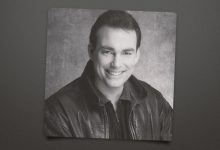‘Heartstopper’ Stars, Creator on Crafting a Realistic and Relatable Love Story: “We’re Breaking Boundaries”

[This story contains spoilers from the season three finale of Heartstopper.]
“I do feel like season one was the most special season. Half of us hadn’t even been on a set before, so it was very, very pure. This season, we’re more adults. It’s a very different kind of thing,” Heartstopper star Yasmine Finney divulges over Zoom. “This season, I don’t know what happened — I mean, I was in a relationship. But the season just really challenged me.”
Heartstopper, Alice Oseman’s popular YA Netflix drama that garnered wide praise in its first season — and some criticism as too saccharine in its second — is back for a third, and with its return, marks a tonal shift from what the creator and showrunner describes as having been a generally “lighter, more hopeful and optimistic” coming-of-age tale. Currently streaming on Netflix, this season’s aged-up take on relationships, sex and mental health for its group of LGBTQIA+ and allied teens at two British secondary schools “was a very natural progression for me, purely because the story existed that way long before I was getting criticism,” Oseman tells The Hollywood Reporter.
“Charlie is a character that existed in a book I wrote before Heartstopper, and in that book, he is at his lowest in terms of his mental health, going through some quite traumatic times. That was the story, so those themes and ideas were always going to be explored,” they continue. “Also, they’re growing up — the characters, the actors, the viewers. It would feel weird to me to keep rehashing the same thing every single season. It’s exciting for me to let it evolve and grow.”
In season three, that evolution and growth is reflected in Elle (Finney), a straight Black transgender girl, and Tao (William Gao), a straight cisgender Asian boy, who make up one of the series’ three leading couples. The teens have gone on a somewhat whirlwind journey from friends to lovers over two seasons, with their latest arc exploring what it means to be in a relationship, emotionally and physically.
“When I read the script, I saw there were a lot of things that I would tackle this season,” says Finney to THR. “I think the main thing for me was the relationship with Tao and how mature it is. It grows and builds into this unbreakable bond, which I love, and I’ve never experienced as Yasmin. The audience gets to see a very mature, fresh take on not only the gay experience, but the transgender experience, and the experience of falling in love in a more adult way.”
Oseman adds about the latest chapter in the couple’s journey, “Each of them has these vulnerabilities and anxieties that they’re not quite yet able to share with each other, and that does create some tension in their relationship. What Tao has to learn is to let his guard down, and Elle does, too — to be vulnerable with each other in a new, slightly more communicative way.”
According to Traci Abbott, an associate professor of English and Media Studies at Bentley University who is currently studying trans representation in U.S. teen shows, aspects of how Heartstopper depicts the duo makes them uncommon within the larger canon of American screen romances, especially those involving cisgender and transgender teen partners.
“Heartstopper is good at modeling what affirmation looks like in any context, friendship or romance, and in showing how to verbalize to someone else how you feel about them, which can be a challenge with teen shows where many of the relationships appear toxic or manipulative,” she tells THR. “But particularly, if you’re talking about the history of trans representation and romance, it starts with how transness is not an add-on. It’s not in spite of, it’s not a barrier in any context. But it’s not ignored either.”
Part of that comes from how Elle is introduced to viewers, with much of her and Tao’s early friendship as well as her transition existing offscreen, in what star Gao calls the “pre-season” to Heartstopper’s eight-episode debut. “They’ve been friends for so many years,” Finney says. “Picture it: They went to an all-boys school, Elle transitioned while there, Tao loved her through that time, and then she went to a girl’s school and their love story blossoms.”
Gao adds, “Tao’s really been on that journey with her. There’s that history there, that real understanding and friendship. There’s a lot of love from Tao, fierce protectiveness and real allyship and companionship right from the get go.”
Finney recalls her own experience in high school “getting bullied, left, right and center; people calling me this and that.” Heartstopper doesn’t make Elle immune to transphobic harassment, but much of it has remained offscreen, leaving more room for the development of her and Tao’s friendship-to-romance, something Finney says is like a “fantasy within itself, because this never, ever happens” on screen.
“Tao likes Elle so much. He thinks she’s perfect and wonderful. He wants to hang out with her all the time, is always talking about her to the point where it’s kind of annoying for everyone. (Laughs) In writing that, I wanted to show a trans character being adored by their partner,” says Oseman. “And I wanted for Elle being trans to not be an issue for Tao in any way. I think it was really important to show Tao as a straight boy liking a trans girl, and not call into question anything about his sexuality.”
Abbott notes that Heartstopper’s overall approach diverges from much of mainstream film and TV history, which also sees teen shows generally lagging behind U.S. adult programming and U.K. teen series in trans relationship representation. Norman Lear’s 1977 series All That Glitters broke ground in its portrayal of an adult trans-cis partnership that didn’t feature any stumbling blocks — something TV wouldn’t see quite in the same way again until Lana and Lilly Wachowski’s Sense8.
After All That Glitters, the next 40 years would bea time of trans-cis relationships being the focus of ridicule before TV and film expanded to the dramatic romance, where for viewers “there always has to be not just tragedy, but the idea that transness itself is the barrier” to true love and identity, says Abbott.
Over the years, other series have moved the needle in depicting how trans people and their cisgender partners navigate attraction, intimacy and identity. But even as portrayals increased, Abbott notes many narratives continued to put the onus “on trans people to explain themselves to cis people,” focused on a trans person’s body and how they fit into the gender binary, or featured cisgender characters fetishizing or committing intimate partner violence against a trans character.
Heartstopper is among a new era of series like Generation+, Sort Of and Kaos in which characters explore both onscreen romance and intimacy while focusing less on a person’s physicality and more on their personality. “We need more of that kind of matter-of-fact interaction,” Abbott says. “We should see more people who just don’t care or aren’t phased.”
Gao adds, “We’re breaking boundaries with this show in a lot of ways, and I think that’s definitely one of them. It is very important to show the effortlessness of it. There’s no taboo or any kind of unconscious bias, perhaps, that you see in other shows. It needs to be represented. Those stories do happen, and those stories will happen, hopefully, more.”

This effortlessness permeated the show’s first two seasons, but is challenged in some ways and reinforced in others as the couple navigates their relationship. “This season, you really see — something that maybe I’ve never had before with a partner — that extra level of comfort and consent,” says Finney.
The series depicts this is by balancing its romance with real relationship challenges. Gao and Oseman both point to Finney for helping steer the show away from creating what some have likened to the “queer utopia,” present in series like Max’s Gossip Girl and Netflix’s The Politician.
“American teen shows are so particular about what conflicts come up that they create this assumption that the show doesn’t have to talk about a character being trans because in the show, everyone’s beyond that,” Abbott says. “But that’s inaccessible to everybody watching it who’s not in that very privileged, wealthy queer utopia.”
While Heartstopper has never quite been that, viewers have watched Tao openly support Elle’s art career, or their family members — without question — excitedly embrace their relationship. These kinds of moments Abbott says not only illustrate support for Elle as a whole person, but treat the duo’s romance like other relationships, instead of an exception. With season three, what they’ve offered viewers before is now depicted alongside things like “true gender dysphoria in a relationship and certain comfortabilities with partners,” says Finney.
One scene shows Tao and Elle becoming intimate before she slows things down, while another features an open and honest conversation in which they discuss what informed Elle’s reaction. That talk, in particular, is one Finney, Oseman and Gao all see as significant in terms of portraying the realities of trans-cis relationships.
“As a cis-heteronormative guy like Tao, you need to realize that sometimes, when you fall in love with a transgender person of color, there will be things that you sign up for,” says Finney. “It’s not easy to walk in my shoes regardless, but to be with someone is also not easy.”
Gao adds that these conversations are not talking about it “from the place of, ‘I don’t know about this’ or ‘what are people going to think?’ It’s about Elle and making sure she’s comfortable. It’s focused on her and not Tao in a lot of ways, but that also makes it about Tao.”
“All the characters are exploring sex in their own ways, and of course, for Elle, being trans is a part of it. It’s a big part,” says Oseman. “When Tao says he doesn’t really think about her being trans and that it doesn’t matter, she says it’s still a part of her and it’s OK to acknowledge that. It was a learning curve for me in terms of writing, and knowing when it’s right to broach those topics and show those experiences. Hopefully, it will create a more relatable and realistic story.”
Oseman credits Finney with helping shape this and other scenes, like Elle’s talk with friend and fellow trans girl Naomi (Bel Priestley) about her anxieties around her first time, during rehearsals. That’s when the actress approached Oseman about finally showing the “harder parts of being trans for Elle,” the showrunner says. “We did have a couple moments where we went back and forth with ideas of how we think this scene should go, just from my lived experience as someone who basically is Elle in real life,” says Finney. “Alice, as someone who’s nonbinary, can’t necessarily speak on a transgender male to female experience, so I was very blessed to be given the floor with certain things.”
“We read through the script with Alice, and there were just a few points where we were like, ‘hang on a minute, we can’t go over to shoot this until we really talk about this.’ Yaz led this conversation that was really vital in the way we played these scenes in the end,” says Gao of the “half day” conversations the trio had ahead of filming. “It’s hugely important. The amount of people that watch the show, we needed to do their story justice, and make it a real experience, a real touch point.”
Oseman explains, “When I embarked on writing season three, I was still very much in the mindset of wanting to show a really positive experience of growing up as a trans person. In the past, I felt quite reluctant to show any of the darker, more difficult parts of being trans, mostly because there are a lot of trans stories that are quite dark, sad and traumatic. But as soon as [we spoke], I was like, ‘that makes so much sense,’ and that’s going to make a more powerful and important story for Elle by tying it into all the grander themes of the season.”
In another scene, Elle is invited on a radio show to talk about her artwork, but is instead bombarded with questions by a journalist about trans-related issues. It’s the kind of situation Finney, who began her time on the show as a teenager, says she’s always had to deal with, now just on “a higher, very weirder, different” scale. “I’ve had interviews where sometimes I’ve been made to feel uncomfortable,” says the actress. “It’s hard but you get tough skin from it.” For her, it’s important for trans people to remember “life will not be easy. It just will not, and that is the strength you get from life as well. That’s why we’re stronger than pretty much the rest.”
“We live in a world which is very binary. It’s very stuck up within its views. I used to be like, ‘I hate that,’ but now I just kind of respect that, as long as it’s vice versa. I think that’s what people struggle with — that two-way street of just respecting the human being. If we strip everything down, the labels and stuff, we are human beings with feelings, thoughts and emotions,” she says. “It’s important for trans people to be themselves and be as authentic as possible, even with all the noise. But in the sense of protecting your energy as a trans person, I think that’s so important as well. If you have a conversation with someone and you know the respect isn’t there, then that should be an instant walk off situation.”
Elle and her family do walk out of the interview in the series, in “a big turning point for their story,” Oseman says. “Tao has this moment where he is suddenly faced, literally, with the level of transphobia that Elle is facing on a daily basis.” Gao and Oseman discussed how to tackle the character’s reaction, which is guided by the teen’s fear and concern for someone he cares about, “something we all feel sometimes,” Gao says. “I think he’s mainly concerned for Elle. I don’t think he thinks about himself. He completely adores Elle and loves her. But there’s that realization that I don’t see any of these boundaries and these biases, and other people do.”
“As a cast and crew, we have these moments where we are making this beautiful, beautiful show that’s so loving, and then you see that thing in the news and you get this realization of, ‘Shit,’” Gao tells THR. “We’re channeling all this love, but there is also this other stuff going on that you do need to acknowledge. You can’t block it out, because blocking it out isn’t the right way, necessarily, to combat it.”
For Tao, the actor and Oseman chose to depict a more mature response, illustrating not only the teen’s own growth, but one way trans people should expect support from their partner. “We definitely talked about maybe Tao getting angry and going on a rampage that he would have done in season one,” Gao explains. “But it was like, ‘no, actually, he’s more layered than this now.’ They have gone through a couple of beats in season three that would inform a more mature reaction, after he realizes even more about himself and about their relationship. It’s a good testament, this moment, to his maturity to let Elle come to him with it as opposed to being very, very protective.”
As for how the series models for its audience, Abbott says Heartstopper “doesn’t make certain ways that boys behave only related to their sexual identity. If we are going to combat transphobia and homophobia, you have to combat perceptions of masculinity that have to be not affectionate or non-emotional except in rage and violence. It’s nice that Tao retains the ability to be affectionate and caring — even when he’s [upset].”
While this season isn’t shy about challenging the couple, Heartstopper still delivers on the butterflies and fireworks their love story is known for, which includes the couple’s first time. The entire sequence is the kind of positive representational moment that is still relatively new for trans characters, especially within the rom-com or romance space, which includes films Anything’s Possible and Boy Meets Girl. Even in modern shows, Abbott’s “almost never” seen the portrayal of heterosexual young women’s intimacy told specifically through the lens of a trans girl — something that can “validate the experience of multiple people without acknowledging their specific identities.”
That’s due, in part, to certain LGBTQIA+ characters frequently having their intimacy visually minimized or implied in dialogue in comparison to their counterparts, who are seen “rolling around in a bed,” says Abbott. “There’s been a lot of scholarship that says media — like Love, Victor or Never Have I Ever — is validating queer male perspectives and heterosexual female perspectives in the teen sphere. But queer cis women and anyone who is trans or nonbinary is left out of that conversation.”
For Oseman, “I wanted to show them not in an explicit way, because [Heartstopper’s] not that, but I did want us to see the moment where it’s going to happen for the first time, and to feel the excitement and the spontaneity of it.” Oseman credits that in part to their conversations with Finney: “I love that it happens at a party with the fireworks in the background. We really wanted to see that moment for Tao and Elle, and for it to feel celebratory and teenage.”
It’s a moment of “complete joy” for Tao and outside of representations of “teenage love from the male perspective that was maybe, for me growing up, a lot of macho high school guys who got the girl,” Gao says. “It’s important that hardships are discussed and showcased, but when it is just them living and breathing, the living embodiment of love and romance, it’s a beautiful thing to play.”
“In teens’ shows, they’re learning what love is, and it’s just as revolutionary to them that someone loves them as it is that they love someone,” says Abbott of the significance of a moment like this. “When you’re a teenager, you don’t always love yourself. As an adult, hopefully you love yourself, but that’s often taken for granted in adult romance. It’s not in teen romance, and I think that’s powerful, even without the sexual aspect.”
Finney sums up, “It really does change the face of not only the future generation, but also just people that live in fear. Trans people or nonbinary people that don’t necessarily have the confidence to start a relationship because of some of the things Elle’s going through, this is a very positive way of showing people that it should be easy, it is easy. It shouldn’t be hard. I hope it does well for what it is meant to do. For Elle, especially, I just hope that she gets seen by the audience she needs to be seen by and that people can feel inspired by her like they did in season one.”
***
Heartstopper season three is now streaming on Netflix.
Source: Hollywoodreporter
Related Posts
- Roundball Rocked: With NBA Return Looming, NBC Purges Scripted Roster
- SoundCloud Says It “Has Never Used Artist Content to Train AI Models” After Backlash on Terms of Service Change
- Fox News’ Camryn Kinsey Is “Doing Well” After Fainting on Live TV
- Kerry Washington and Jahleel Kamera in 'Shadow Force.'
Courtesy of Lionsgate
…
- This Alternative Artist Landed a Top-20 Chart Debut With an Album Made Almost Entirely on His Phone





